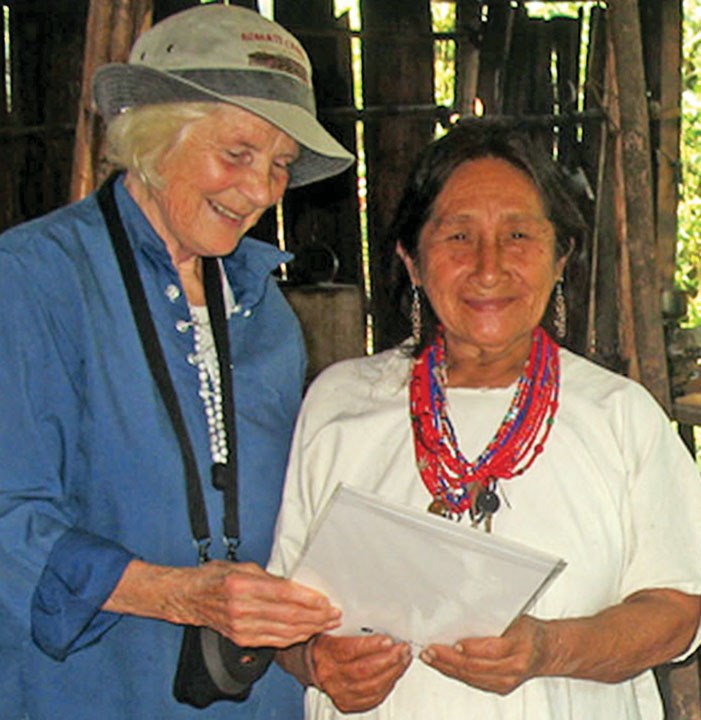Shendra Hanney of Pender Harbour has a mission dear to her heart: to further the legacy of her late filmmaker and photographer husband, Collin Hanney. In 1960 he trekked over rough trails near Chiapas, southern Mexico, deep into the jungle to find a little known tribe, the Lacandon Maya. Collin’s film, To the Land of the Ancient Maya, shot with the hardy Bolex camera, was ground-breaking. He became friends with many of the people, attended ceremonies and learned much about them. He filmed this experience and later went on a lecture tour in North America, acting as an advocate for the indigenous people who were, and still are, stewards of their land.
Collin died in 1997 but the Lacandon Maya lived on in an ever-changing forest landscape. Shendra went to visit them in 2006 bearing Collin’s ashes to be scattered by a lake. She was also returning some of the cultural artifacts, gifts to Collin from a previous time. A documentary of Shendra’s journey was made for the History Channel and it includes some older footage from her late husband’s vintage film.
Shendra, now 81, is a bundle of energy in her Pender Harbour community and has a love of music and the arts. Her memories of the Lacandon Maya were rekindled in 2013 when it was discovered that Collin’s camera work would be featured in a new documentary about the Bolex camera. Inspired, she planned a second trip south last May.
When she returned to the village she didn’t know what to expect, but described it as “a whirlwind experience.” This visit was to offer some photo portraits of the tribe’s ancestors taken by Collin on his visit.
Within two days of her arrival, a cultural event was organized and attended by the First Lady of Chiapas and the minister of culture at Na Bolom, House of the Jaguar. Na Bolom is a cultural centre, with a gallery especially for the Lacandon Maya, in San Cristóbal de las Casas, Chiapas. Collin’s 10 large portraits were placed above the display cases, portraying the peoples and lives of the tribe over half a century ago.
The next day Shendra travelled to the isolated jungle village of Nahá, where Collin first recorded the people in a time before the destruction of the great mahogany rain forest.
“Whereas, eight years ago,” Shendra said, “there was a form of a hotel in the village itself, now I found that the Lacandon have evolved an eco-tourism hotel near Lago Nahá — with thatch-roofed cabins, solar systems for light in addition to electricity and an economically sound use-of-water system.”
Collin’s photos were exhibited in the village’s museum on walls made of a prolific reed called carrizo. The community gathered at the exhibit opening to see the 2006 film of Shendra’s journey. But the skies stormed, the power went out and the event had to be cancelled. Despite this disappointment, the highlight for Shendra was to share the photographs with the generations since 1960.
“It was magical,” she said. “The sheer joy, the excitement, the memories they evoked was intoxicating for all of us.”
This recent journey was documented, and Shendra hopes to share the film on the Coast. Since her visit, the Lacandon Maya have engaged in further fierce battles of stewardship for the forest.
Next week, Part 2: Bolex buddies. Coast residents Shendra Hanney and Maynard Kaasa are interviewed by a Los Angeles filmmaker about the camera they have in common.



